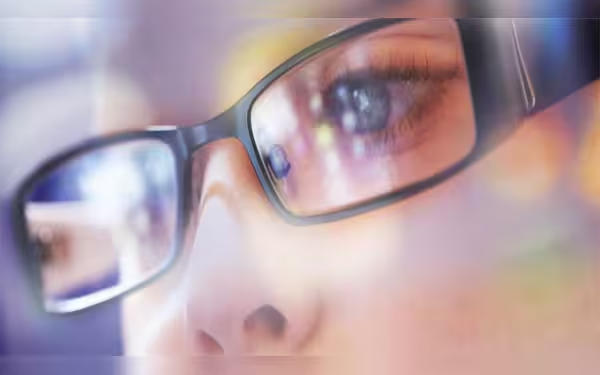Sunday, November 17, 2024 01:45 AM
Rising Myopia Rates Among Youth: 40% Predicted by 2050
- 40% of youth may be myopic by 2050.
- Excessive screen time linked to vision problems.
- Outdoor activities crucial for eye health.
 Image Credits: dunyanews.tv
Image Credits: dunyanews.tvA study warns that nearly 40% of young people could be myopic by 2050 due to increased screen time and lack of outdoor activities.
In recent years, the issue of myopia, commonly known as shortsightedness, has become a growing concern worldwide. This condition affects a significant number of young people, making it difficult for them to see distant objects clearly. As technology continues to advance and screen time increases, experts are warning that nearly 40% of young individuals could be affected by myopia by the year 2050. This alarming prediction is based on a comprehensive global review that analyzed data from 50 countries, highlighting the urgent need for awareness and preventive measures.
The latest analysis, conducted by researchers at Sun Yat-Sen University in China, examined 276 studies that included approximately 5.4 million children and teenagers. The findings revealed nearly 2 million cases of myopia, underscoring the widespread nature of this vision problem. The researchers emphasized that the rise in myopia cases is not just a passing trend; it is a public health issue that requires immediate attention.
One of the primary factors contributing to the increase in myopia is the excessive use of digital devices. Children today spend more time than ever on screens, whether for education or entertainment. This prolonged exposure can strain their eyes and lead to vision problems. Additionally, a lack of outdoor activities has been linked to the development of myopia. Natural light is essential for healthy eye development, and children who spend more time indoors are at a higher risk of becoming shortsighted.
Parents and educators play a crucial role in combating this issue. Encouraging children to take regular breaks from screens, engage in outdoor play, and participate in activities that promote eye health can make a significant difference. Simple practices, such as the 20-20-20 rule—looking at something 20 feet away for 20 seconds every 20 minutes—can help reduce eye strain.
As we look towards the future, it is essential to prioritize eye health in our daily lives. With nearly 40% of young people potentially facing myopia by 2050, awareness and proactive measures are more important than ever. By fostering healthy habits and encouraging outdoor activities, we can help protect the vision of future generations. It is a collective responsibility to ensure that our children grow up with the best possible eyesight, allowing them to see the world clearly and fully.













